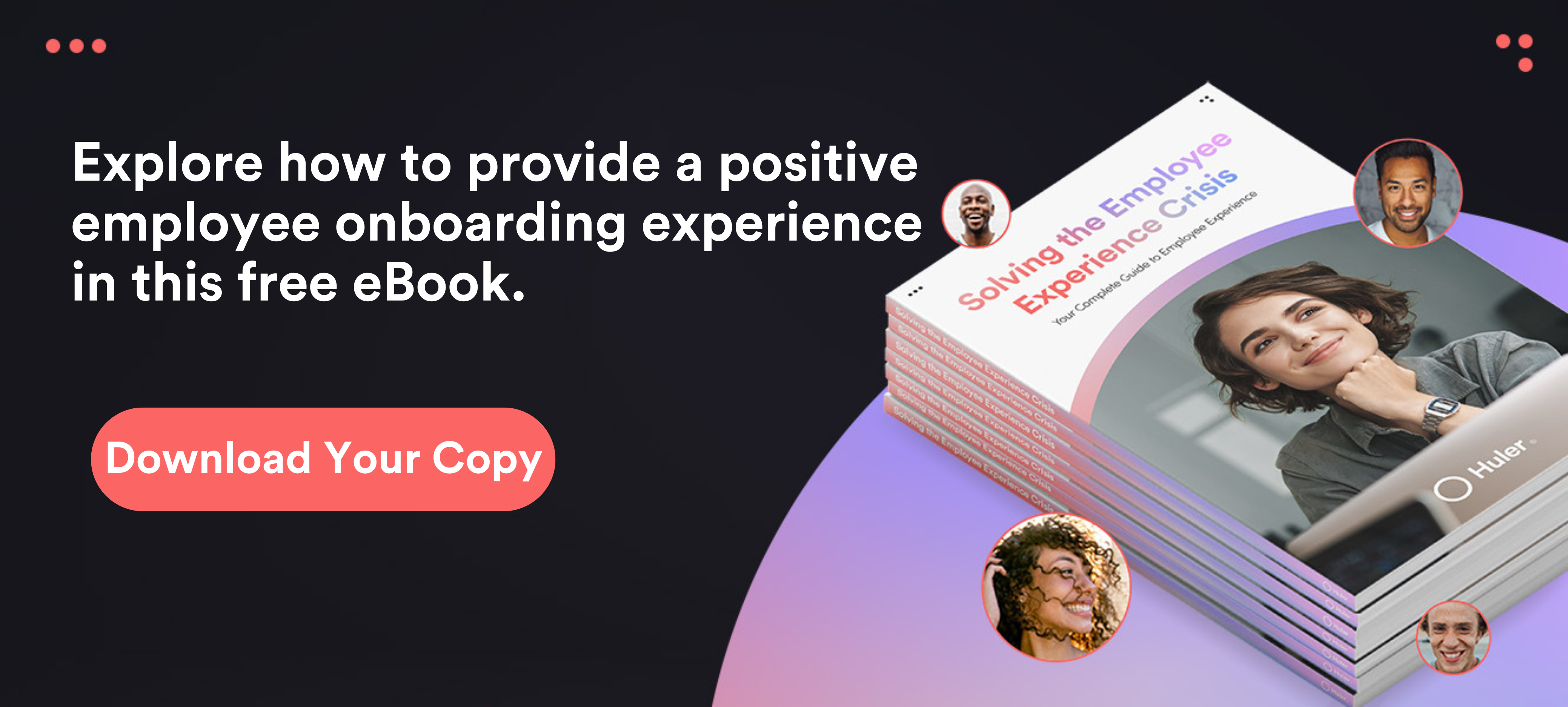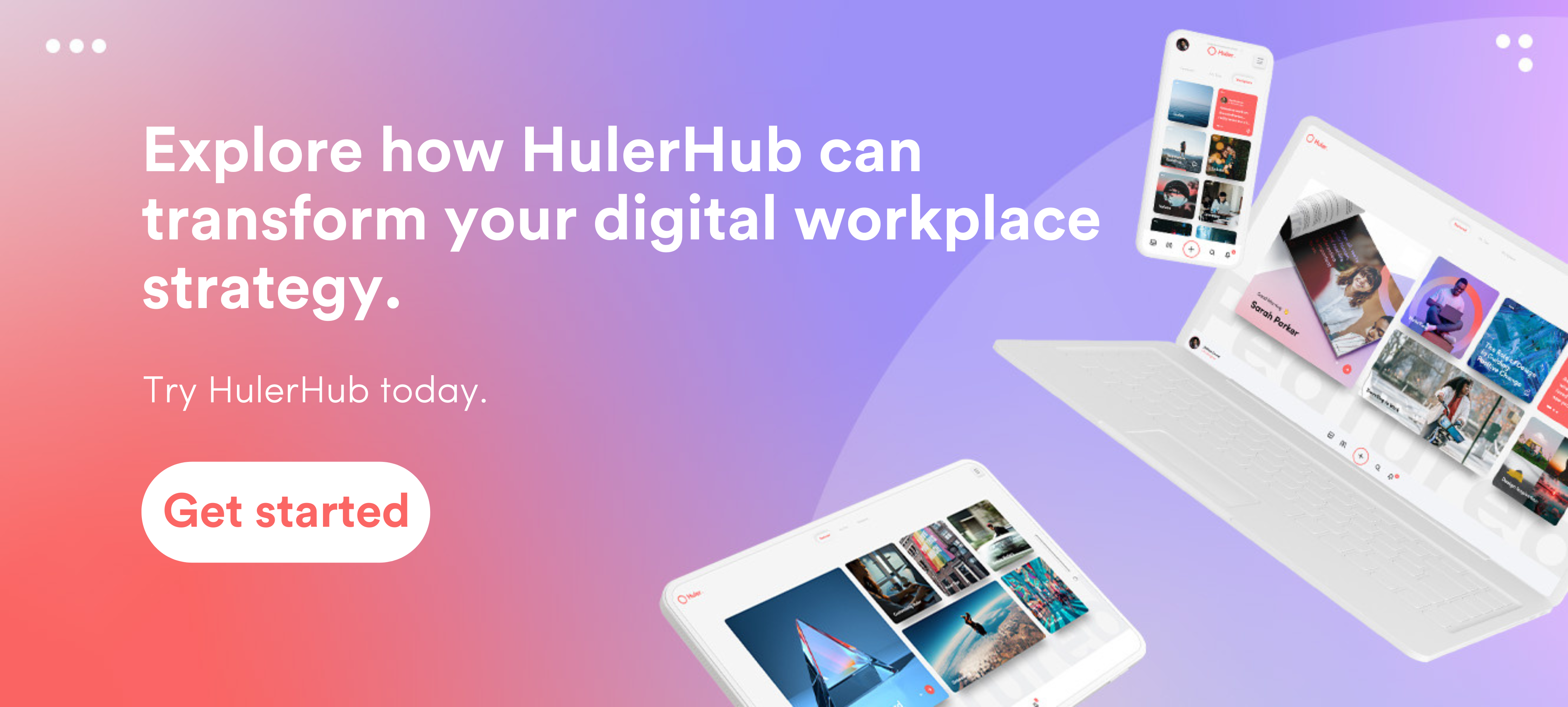The global transition to remote and hybrid working models has changed how we work. From providing a flexibility that once seemed like a fantasy, to helping employees gain more control over their working lives, this shift has been for the better. These changes have also transformed learning and development.
Within large organisations, training and onboarding has happened across different locations for some time. But for smaller companies, the change has been more sudden. And now with fewer people permanently working from the office, the challenge for all businesses is clear: how can they successfully move their training and onboarding processes online — from Zoom training and eLearning, to digital onboarding?
It’s crucial that employers do this successfully: one study found that 94% of employees would stay at their company for longer if their company invested in their career development.¹
So the benefit goes both ways. Providing employees with engaging and ongoing learning and development opportunities means that your business ends up with increasingly knowledgeable, skilled and capable staff — while employees feel valued and can enhance their personal development.
Necessity is the mother of invention. Thanks to technology, businesses have invented — and continue to invent — new learning and development programmes, and new ways of delivering them in a hybrid working world. With that in mind, here are the five defining learning and development trends.
Upskilling and reskilling
In the move to remote and hybrid working models, upskilling became a necessity: people had to learn how to use new technology to do their jobs, from videoconferencing to using new apps.
In the future of work, closing digital skill gaps will become even more important, as technology starts to automate more jobs. Employees will need to upskill and reskill, to varying degrees: from switching to entirely new roles to enhancing their current skillset.
But aside from macro technological changes, upskilling and reskilling remain important trends in daily, business as usual tasks. Employees can always be empowered to do their job better through upskilling, while reskilling is crucial for those who simply want to change roles or need to begin learning new skills during their onboarding process.
Strategies to help
A modern employee experience platform can present upskilling and reskilling training opportunities in attractive and effective ways, including:
Accessibility
For upskilling and reskilling to be viable options for employees, training programs and resources must be accessible. If users have to dig into their digital workplaces to find every document or video, they might become frustrated, demotivated and abandon their attempts. Or, worse still, employees might not know the training exists. If the training isn’t clearly visible in their digital workplace, it will sit unused. This can lead to a poor ROI on potentially expensive learning materials.
Personalisation
Providing employees with training opportunities for every skill in the book, and dumping all your available resources on them, isn’t helpful. Upskilling resources need to be specific to people’s current roles, while reskilling training needs to be personalised to the area that person wants to gain skills in.
Video training
People want learning and development, but they don’t want it to be boring. Who wants to read blocks of text after blocks of text with no interaction or videos? Studies show that visual learning methods, such as videos, help information to stay in the memory for longer, and can impart information quicker than text.²
With the rise of video social media platforms like TikTok, it’s no surprise that videos are a key learning and development trend in 2022. It’s an important way people absorb information, and to be a people-first organisation, businesses should meet employees where they are.
Strategies to help
Support text with video
Adding videos into learning and development modules offers a change of pace from blocks of text. Not only can videos help information become more memorable, but they can also be more engaging. Videos can be short, reminder-style formats displayed on employee dashboards or longer walkthrough videos within L&D modules — and everything in between the two. As with the rest of your training content, it needs to be personalised to the employees to target and optimise what they are learning.
Be welcoming during onboarding
Using videos during onboarding can also be effective. Imagine you’re a remote worker who receives a video from your manager or your team welcoming you on your first day. Compare this to an email. This can help them feel part of a team, rather than a cog in a machine.
Integration
With a modern platform with features such as customisable video tiles, you can draw employees’ attention to training using videos or keep them in a visible place so employees can access them easily. And by integrating the learning into the digital workplace, users don’t leave the platform so they won’t get distracted — or fall down a YouTube wormhole.
Knowledge sharing
Sharing knowledge within a company is important. But how that knowledge is shared — in a quick and easy way — is even more important. Without it, the return on your investment made in learning and development might not be as great as it could be.
Both employers and employees should be able to customise users’ dashboards to highlight specific knowledge and training. For example, employers should be able to curate relevant learning activities into collections and distribute them to different teams and people based on what they need and want. Meanwhile, employees should be able to curate their own collections and display them in their digital workplace, for easy access. And this doesn’t just help them: by creating collections, employees can also share their knowledge with their colleagues.
Curating and sharing learning resources demand a modern employee experience platform to collect, collaborate and share. Older-style intranets just won’t cut it.
Strategies to help
Using collections
By curating learning and development modules into collections, employees can keep track of their learning and prioritise their training. Collections also help with sharing: rather than sending a training course here and a module there, by organising knowledge into collections, employees can share curated information with their peers.
This process also allows for a causal yet structured sharing of knowledge and expertise. More experienced employees can create collections, which allows them to share their own expertise across the organisation.
Onboarding
Onboarding information can be organised into collections. This provides new learners with a clear roadmap for the materials they need to get through, enabling them to see their progress clearly and get the knowledge they need quickly. Collections can also include people sharing their own onboarding stories, helping new employees feel included, and provide answers to common new starter questions.
Gamification
It’s no surprise that gamification at work is a defining learning and development trend — it seems like a no-brainer. By including features typically seen in video games, including achievements, rewards and levels, gamification helps make learning and development more interactive.
It helps make it engaging too — which boosts productivity. A 2022 study found that 60% of employees experienced an increase in engagement with gamification, and 90% found themselves being more productive.³
Strategies to help
Progress tracking
Using gamification features such as progress bars within L&D modules can help employees track their progress and gain a sense of achievement. This can be particularly helpful during onboarding processes where employees are looking to get up to speed quickly. And features like additional ‘bonus’ questions at the end of a module, which employees can ‘unlock’ by getting a high score within a module, can also add to a sense of achievement.
Sharing
Gamification can also bring a sense of fun and competition to the learning experience. Employees can share their scores and rewards, letting people know about the training they’ve done and allowing others to leave comments.
Gamification elements need a modern, sophisticated digital workplace. Older intranets won’t be able to support gamification Without it, the experience can feel clunky, or worse – frustrating.
Integrating L&D within employee experience platforms
With the transition to remote and hybrid working models, businesses know they needed to move their learning and development online. But just putting these resources online, sometimes on outdated intranets, isn’t enough. For learning and development to be useful and accessible to your employees, it needs to be integrated within a modern employee experience platform.
If it’s not, all your investment in gamification, videos and knowledge sharing features could go to waste. Not only this, but employees might not feel they’re being supported in their career development, and new employees being onboarded might not get off to the best start with your organisation.
Luckily, businesses and L&D professionals are increasingly realising the importance of proper integration and personalisation. It’s a waste of resources to tack expensive materials on as an afterthought. There’s no point in doing something simply so you can say that you’ve ‘done’ it.
Strategies to help
Mobile integration
Employees move around and work on different devices. Learning and development should be accessible wherever they want it. Switching between laptops, desktops and smartphones, employees should be able to pick up a module where they left off, regardless of whether they left off on desktop and want to pick up on mobile. This also means that employees can learn on the go, completing some modules in bite-size chunks, instead of always having to sit down at a desk.
Creating consistency
For those working primarily from the office, if they’re unable to find learning and development resources, they can ask whoever’s close to them. Learning and development should be as easy to find in the digital workplace, too. You should make sure that the access and availability to learning and development is consistent between the physical and the digital workspace.
The future of learning and development
The future of learning and development is online. But for learning and development resources to be effective, they can’t simply be online — they need to be personalised and integrated into a company’s digital workplace.
Most intranets aren’t cut out for this. Employees need to be able to collate their resources, track their progress, and share learning resources with their peers. Outdated intranets, designed for admin, weren’t designed for this — but modern employee experience platforms are.
HulerHub is an advanced digital workplace solution, providing a centralised hub through which employees can easily and intuitively access everything they need — and designed with learning and development in mind.
Employees can curate their own workspaces, utilise a video-tiles feature to integrate video learning, and create and share personalised collections. HulerHub doesn’t just bring together learning and development resources, it makes them accessible and engaging too. This helps employees get the most out of their learning content.
Book a demo today to see it in action.
¹ The Importance of Employee Learning and Development – HR News
² Studies Confirm the Power of Visuals to Engage Your Audience in eLearning
³ 25 Gamification Statistics [2022]: Facts + Trends You Need To Know – Zippia







